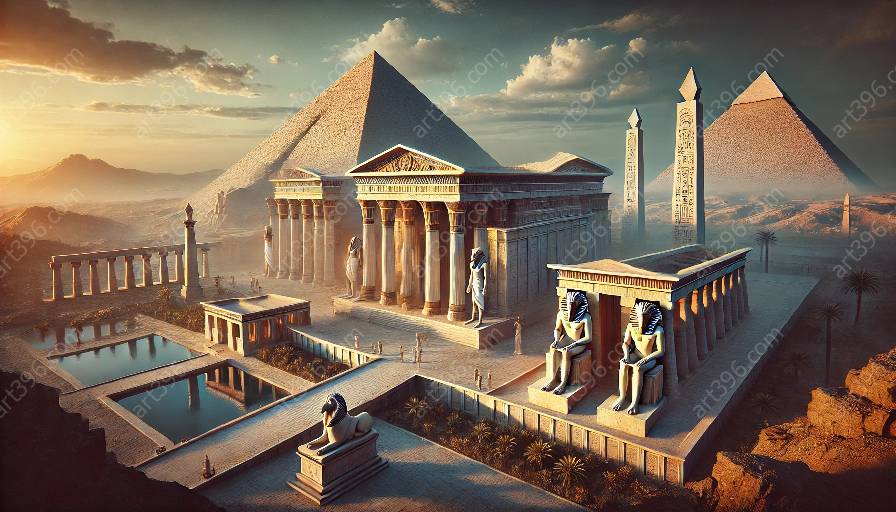Architecture played a vital role in shaping the ancient Egyptian civilization, with both public and private buildings serving important functions and holding significant meanings. Understanding the architectural elements of ancient Egyptian structures provides valuable insights into the society and culture of this ancient civilization.
Ancient Egyptian Architecture
Ancient Egyptian architecture is renowned for its grandeur, precision, and symbolic significance. The architectural elements of the public and private buildings in Ancient Egypt reflect the beliefs, values, and societal structures of this ancient civilization.
Function of Public Buildings
Public buildings in Ancient Egypt were instrumental in governing, religious worship, and community activities. The most iconic public structures were the temples dedicated to various gods and goddesses. These temples served as centers of religious life and were built on a monumental scale, showcasing the power and status of the ruling pharaohs and the divine authority they claimed.
Palaces, administrative centers, and communal gathering spaces were also essential public buildings. They facilitated governance, legal proceedings, and communal gatherings, providing a sense of community and order within the civilization.
Significance of Public Buildings
Public buildings held immense significance in ancient Egyptian society, serving as the physical embodiments of divine authority, societal order, and communal unity. The grandeur and architectural excellence of these structures expressed the collective identity and cultural achievements of the ancient Egyptians, while also reinforcing the authority of the ruling elite and the divine entities they worshipped.
Function of Private Buildings
Private buildings in Ancient Egypt encompassed a wide range of structures, including houses, tombs, and personal sanctuaries. The most notable private buildings were the elaborate tombs and funerary complexes constructed for the elite members of society. These structures were designed to ensure the safe passage of the deceased into the afterlife and provide a lasting memorial to their life and accomplishments.
Houses of the wealthy and influential individuals also constituted private buildings, offering spaces for daily living, family activities, and private worship. They were often adorned with intricate decorations and provided a sense of comfort and security for the occupants.
Significance of Private Buildings
Private buildings held profound significance in ancient Egyptian culture, reflecting the beliefs, aspirations, and familial ties of the individuals and families who inhabited them. The elaborate construction and decoration of tombs and houses conveyed the social status, wealth, and religious convictions of their owners, while also serving as expressions of love and respect for departed family members.
Architectural Elements
Ancient Egyptian architecture encompassed distinctive features such as massive stone construction, intricate relief carvings, monumental columns, and symbolic motifs. The use of symmetry, axial planning, and hieroglyphic inscriptions further defined the architectural style of both public and private buildings.
The layout and orientation of public and private buildings were often aligned with celestial and geographic orientations, emphasizing the connection between the earthly realm and the divine order. Additionally, the use of durable materials and precise craftsmanship ensured the longevity and enduring beauty of these ancient structures.
Conclusion
The function and significance of public and private buildings in Ancient Egypt offer profound insights into the spiritual, social, and cultural dynamics of this ancient civilization. By studying the architectural elements and meanings of these structures, we gain a deeper understanding of the values, beliefs, and achievements of the ancient Egyptians and the enduring legacy of their monumental architecture.









































